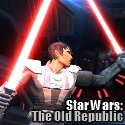QJ.NET Review: Final Fantasy XIII
 You’ve seen all of the other reviews, you’ve heard all sorts of feedback, you might’ve even gotten the game for yourself. It seems by far that there’s a noticable disparity when it comes to adjectives about the game – from glowing reviews to borderline verbal abuse. We don’t do reviews often here at QJ, but there’s a lot to be said about Final Fantasy XIII, so here’s mine, from one gamer to another.
You’ve seen all of the other reviews, you’ve heard all sorts of feedback, you might’ve even gotten the game for yourself. It seems by far that there’s a noticable disparity when it comes to adjectives about the game – from glowing reviews to borderline verbal abuse. We don’t do reviews often here at QJ, but there’s a lot to be said about Final Fantasy XIII, so here’s mine, from one gamer to another.
You’ve seen all of the other reviews, you’ve heard all sorts of feedback, you might’ve even gotten the game for yourself. It seems by far that there’s a noticable disparity when it comes to adjectives about the game – from glowing reviews to borderline verbal abuse. We don’t do reviews often here at QJ, but there’s a lot to be said about Final Fantasy XIII, so here’s mine, from one gamer to another.
Final Fantasy is without doubt one of the biggest franchises in gaming – a name that rings a bell even in non-gaming ears. It has become apparent with the last few installments, minus the spinoffs, that Square Enix has gone beyond the traditional JRPG format in an attempt to push the envelope for the genre. Much of that can be found in Final Fantasy XIII. But were the attempts successful?
The linearity

It’s no secret. You’ll have to spend the first 20 or so hours of gameplay in horse blinds – there will be nowhere to go but forward. There are towns, yes, but not in the traditional RPG sense where you buy items, check into inns, or barge into people’s houses and get Potions from their drawers. All the functions of a town have been compressed into the Save Point, which is now your one-stop shop for items and upgrades. The interactions and the explorations are left to the cutscenes.
It’s a pity, with beautiful towns and noticable detail, Final Fantasy XIII towns would have been a treat to explore.
But can we really blame this game for thinking out of the box? Or was the idea just too unthinkable for a JRPG? Personally, it’s a big deal, but by no means that I’ll give up on a game simply because it lacked a feature I enjoyed. Playing through chapter by chapter of non-stop “dungeons”, the game compensates with movie-like cutscenes that would feel like exploring the towns, minus you being on the driver’s seat.
Because of this structure, a lot of the games features, like the equipment upgrades, the Eidolons, and the explorable territories, have been pushed back hours into the game. You’ll get them later on, but it’s a little inconvenient if you’re starting out.
Square still knows how to please the eyes…and ears!

When it comes to RPGs and top-notch graphics, Square Enix has always been one of the giants, if not the big chief. That doesn’t change in Final Fantasy XIII – stunning cutscenes, detailed environments, you name it. It is by no means the graphical superlative of this generation, but it’s easily the best-looking JRPG on both its platforms.
The battles, the characters, the enemies look terrific, and even as the multiple blows and spells fly, you can make out every stroke. While exploring, NPCs you meet along the way have admirable fine-hair detail to them, and it wouldn’t be a waste of time to look at a Chocobo from every angle.
Music in and out of battle, in the menus and during cutscenes also deserve some recognition, complemented by solid voice acting. All are in sync with the overall tone of the plot, adjusting to the varying moods in the game. You’d also be glad to hear words in the Chocobo theme song.
About the only thing not pleasing to this pair of eyes is the stubborn camera. When you’re looking around for treasures or turning the camera while prepping for a Preemptive Strike, expect to get a little annoyed.
Got the swagger when you got the Stagger

The Final Fantasy XIII battle system is essentially a hybrid of the FFXII Gambit system and good ol’ turn-based action. Fortunately for this game, it got the best of both worlds. You only get to use your party leader, meaning your two other party members will act only according to their role in the Paradigm. Shifting Paradigms basically changes their actions.
Despite being turn-based in nature, this game will still keep you on your toes since there are plenty of real-time dynamics present in every battle. You’ll need to juggle enemies in mid-air, select attacks that will all connect, and time the entering of those commands before the enemy falls back down. You will also find that you’ll need to attack before your entire ATB Gauge is full (especially in later parts of the game).
Allies’ actions are not as in-depth and versatile as a well-structured Gambit system, but the FFXIII battle system is superior in such a way that it does not take the gamer out of the game. You can literally put your controller down and watch battles in FFXII because of the Gambits – do that here and you’ll see the game over screen pretty quick. Smart AI makes up for the lack of instructing allies, and more often than not, they make the right decisions with their actions, always going for enemy weaknesses or whoever is in more need of healing.
There are many opponents with a crap load of HP, but that’s not going to be a problem – you’ll begin to enjoy the fact they just refuse to die. Victory lies in Staggering your opponents and chaining attacks – something you must always keep your eyes on. It looks intense and is very enjoyable, especially if you love seeing large enemies thrown in mid-air while your entire party ganks the crap out of it, numbers flying.
The Crystarium

Oooh shiny. Character build up in this game would fall into the shiny 3D Sphere Grid known as the Crystarium. Very reminiscent of the FFX Sphere Grid, but a lot less complicated to use. Starting out, a character has only two or three roles available, but you can unlock them all later in the game. Each role has a different path along the Crystarium with different crystals to activate. In the Sphere Grid, you’re stuck with activating the next node, unless you have points to spend to backtrack to another end. Here, you can return to all activated nodes across all roles free-of-point-charge.
There are no locks, no spheres needed to activate nodes, and you don’t need to worry about moving from one end to another without expending precious points. As long as you’ve got enough Crystarium Points, you can build attributes and learn skills from any of your character’s available roles.
Here’s where gamers can debate about the Crystarium – it only expands after reaching specific points in the story. This means that no matter how many points you got, if all your current crystals have been activated, you’ll have to wait until the Crystarium expands.
For those who prefer to grind and attain Firaga before the first boss, you won’t get that chance here. On the other hand, the limited Crystarium across intervals will ensure that you win in terms of skill and strategy, not with brute over-levelled force.
The fal’Cie, the l’Cie, and the world

I won’t be risking spoilers so I won’t go into detail here. But one thing you have to know about Final Fantasy XIII is its very impressive storyline. It’s not entirely unique, but it’s definitely not running along the realms of same-olds and cliché. There’s a lot of drama, there’s a lot of conflict, and there’s plenty of room for the player to immerse in the plot.
Each of your party members have well-rounded personalities, inner conflicts, and a real story behind their persona – each with their black and white traits. No one simply tags along for this journey just because they joined your party in some town. Your party members will stay with you for deeper personal reasons and purpose, rather than just going along for an adventure, catch frogs in the Outer Continent, or because Bugenhagen asked them to. They’re in it for their personal and collective reasons.
You will need to familiarize yourself with a few fictional terms along the way, but it’s nowhere near the Metal Gear matterload, or the closed-context dialogues of FF Tactics. In case you weren’t able to follow, careful easy-to-understand explanations can be found in the Datalog provided to you.
Core and casual
There’s something in here for both the hardcore RPG fans and the newcomers to the franchise. For those who prefer to just play through the game, you’ll be glad to know that there is no grinding required in this game. As long as you fight the battles you run into, you will not lack the points you need. You can play and beat this game top to bottom, even without upgrading your weapon. That’s not to say the game is easy – it’s just that this game is more brains over brawns.
For the fans and completionists, there’s an entire Crystarium to master, a truckload of spoils to hoard, equipment to upgrade, and treasures to collect. You won’t miss out on those here. Keep shooting for that Platinum / those Achievement points.
In short…
Aesthetics – Full marks for graphics…for a multiplatform game. Engaging sound, versatile score.
Gameplay – Turn-based was never this intense, with battles geared for skill over grinding. Sucks about the towns though.
Story – Not the best, but definitely one of the best Final Fantasy stories ever told.
Overall
It’s really unfortunate that internet-hating and warring opinions got the game even before we did. Honestly, it’s not the epic, show-stopping, all-pleasing, phenomenon of the generation. Not all Final Fantasy games will make thundering marks like Final Fantasy VII did, they can’t all be on top of the pedestal. But just because this FF wasn’t epic, let’s not be blinded and not see the very good game under the shadow of its own name.
Final Fantasy XIII: 8 / 10


